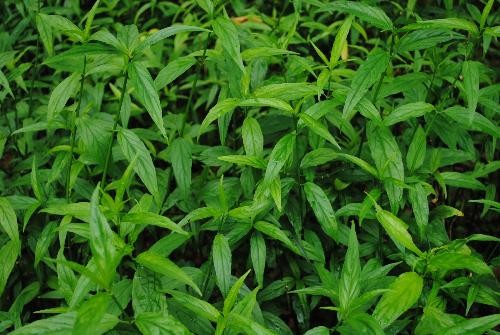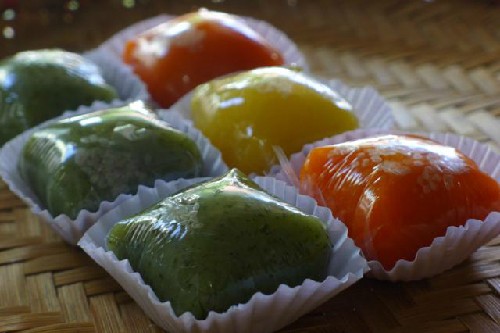You're listening to Food Delight - the show for all food lover out there.
A: Hello and welcome to this week’s edition of VOV 24/7’s“Food delight”. We are …. and …, and we are very happy to be here to share our recipes with you.
B: Hello, you guys. Hello, A. Hey, A. I know you’re from Hanoi. So, what do you think of Hanoi cuisine?
A: Me? Well. Hanoi cuisine is very attractive to Vietnamese and foreign visitors alike. It’s no exaggeration to say that Hanoi streets are brimming with restaurants and street stalls.
B: For sure. You know, winter is coming and sometimes when I’m returning home from the office, I find myself slowing down to enjoy the good smell of all the food being sold along the street.
A: Come back, B. We’re in the studio now. Come on, B. We’re trying to create a link between Hanoi cuisine and the dish we’re gonna introduce in today’s program.
A: Oh, right. The dish we want to introduce today is an ancient Hanoi dessert that embodies the ancient tastes and also the spiritual values of Vietnam’s capital city. The name of the cake is Manh cong. This name may be unfamiliar to the younger generation now, but I bet that name rings a bell with many Hanoians.
B: Manh cong. I’ve heard that name once or twice. It appeared in my grandma’s stories about traditional trays prepared for the Tet holiday or other special occasions. The cake, with its fresh green color, sweet aroma of glutinous rice, and fragrance of green beans melts your heart from the first bite.
 |
| Manh cong leaves, a source of calcium, are not only tasty but also good for human bones, especially important for children and the elderly (Source: Baomoi.vn) |
A: For a long time, this traditional dish had all but disappeared. However, through the effort of Hanoi culinary expert Nguyen Phuong Hai, who has spent years working to preserve the authentic taste of traditional dishes, this cake is being revived and should soon be popularized again. We invited Hai to our studio to show us how to cook this dish in the traditional way. Let’s hear Hai talk about the cake and its benefits. “Manh cong” is a kind of Herbaceous plant, which can be found growing wild in forests, wet fields, and village ponds. Manh cong leaves, a source of calcium, are not only tasty but also good for human bones, especially important for children and the elderly. In the past, Manh cong leaves were served as a vegetable, or used to treat small open wounds. Hanoians, with their skillful hands, exploited this wild herb in colorful cakes combining the fragrance of manh cong leaves and glutinous rice.”
 |
| Hanoians, with their skillful hands, exploited this wild herb in colorful cakes combining the fragrance of manh cong leaves and glutinous rice (Source: Blogphunu.net) |
A: B, I must admit that few people, even those born and raised in the city, find the name “Manh cong” familiar. I think the leaves are no longer commonly sold in supermarkets, or even local markets.
B: I agree. Manh cong leaves are much harder to find than in the past. That’s why Chef Hai has had to grow his own leaves. And you know what? It has taken him years to recreate the authentic taste of Manh Cong cake.
A: That’s unbelievable. I’m excited to learn how to make it. Let’s hear Hai describe the steps. “The Manh cong leaves are ground until smooth to extract their juices, which have a special aroma that other leaves can’t match. The extract is then mixed with glutinous rice flour and sugar before cooking over low heat. Remember to whisk constantly until the dough just comes to a boil, then let cool to room temperature. For the filling, blend green beans with shredded coconut and sugar. When the ingredients are ready, wrap the cake in banana leaves and steam about 10 minutes before serving.”
 |
| In the past, Hanoians families often offered a plate of multicolored cakes to their guests to show the host’s hospitality, and the skill of his wife (Source: timeoutvietnam.vn) |
A: Not too many steps to follow, right?.
B: Right. But remember to keep the fire at medium heat when steaming, and the final result will be surprisingly good. "When it’s steamed, the dark green dough turns translucent, so the filling will be highlighted and eye-catching. When you enjoy a piece of the cake, you will see just how elegant and sophisticated Hanoi cuisine is.”
A: In the past, Hanoians families often offered a plate of multicolored cakes to their guests to show the host’s hospitality, and the skill of his wife.
B: Those sophisticated, little cakes reflect the elegance and beauty of Hanoi cuisine, and remind people of Hanoi’s in the past. Now, good bye. We’ll catch you next time on VOV24/7’s Food Delight.